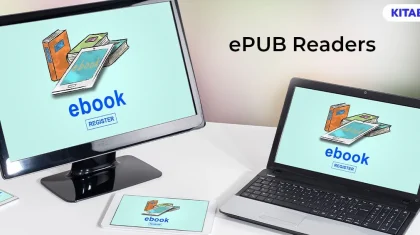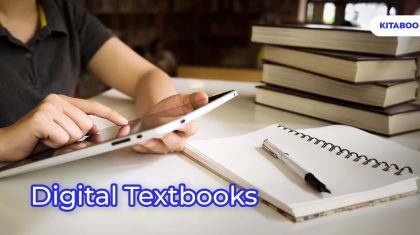
The Benefits of Embracing Digital Textbooks for Enhanced Learning
In the last few years, digital transformation has impacted almost every sector in diverse ways. Businesses are making strategic investments to stay relevant and keep growing in a dynamic digital world. By 2026, global spending on digital transformation is forecast to reach $ 3.4 trillion.
In the world of education, publishers who invest in growing their digital textbook verticals early on can reap the benefits as eBooks gain popularity. For instance, in India, the number of eBook readers is expected to grow to 138.7 million users in 2028. This shows the significant shift towards digital resources in the educational realm.
In this post, delve into the myriad advantages that digital textbooks offer both students and teachers. Additionally, we’ll explore the strategies that educational content publishers can employ to create and introduce innovative digital textbooks into the learning landscape. Let’s start!
Table of Contents:
I. The Shift to Digital Textbooks in Education
II. Benefits of Digital Textbooks for Students and Teachers
- Engaging Interactive Textbooks
- Accessible Textbooks
- Enhances Learning Activities
- Collaborative Learning Experience
- Introduce Learning Assessments
III. Implementing Digital Textbooks in the Curriculum
- Seamless Creation of Digital Textbooks
- Superior Viewing Experience
- Secure Distribution
- AI-powered Data Analytics
The Shift to Digital Textbooks in Education
The transition from physical textbooks to digital textbooks is a consequence of a number of factors.
- Digital textbooks, for instance, are less expensive to produce by publishers and purchase by learners. They are also less cumbersome to carry around and consume less physical space.
- The shift to digital textbooks is also accelerated by evolving learner habits. For instance, learners are adapting to the mobile-first learning mode. They are embracing trends such as micro-learning because of access to engaging, on-demand multimedia resources.
- Digital textbooks, which come with multimedia elements and interactivity, weave in all these elements. Hence, they will be the go-to textbooks of the future.
In this context, digital textbook platforms like KITABOO come in digital educational content. The platform helps publishers leverage their content in a digital format, making it accessible to a wider audience.
Benefits of Digital Textbooks for Students and Teachers
Here’s a snapshot of the key benefits of digital textbooks for students and teachers:
Engaging Interactive Textbooks
With advances in digital publishing software, publishers can integrate a wide range of multimedia into the content mix. These include video, audio representations, interactive quizzes, infographics, and slide shows.
Complex concepts can be explained using byte-sized multimedia elements, making learning engaging and interactive. This approach paves the way for easier understanding and retention of concepts and higher learning effectiveness.
Accessible Textbooks
Another transformative benefit of digital textbooks for students is the prospect of accessible learning. Interactive eBooks pave the way for accessibility features such as adjustable font sizes and the use of multimedia to fill learning.
Digital textbooks can also be published in multiple languages with ease. For instance, languages with a right-to-left script, like Arabic and Urdu, can be seamlessly published using superior digital publishing software, making digital textbooks accessible to a wider audience.
KITABOO, in this regard, plays a crucial role in promoting accessible learning through its features and capabilities. With the help of this platform, publishers can ensure that their digital textbooks are designed and delivered in a way that prioritizes accessibility for all students.
Enhances Learning Activities
Teachers can leverage the benefits of digital textbooks to enhance learning activities in the classroom. For instance, they can enhance learning of concepts through 3D models, followed by a live Q&A. Students can also engage with interactive widgets such as live worksheets, where they can pen their learnings.
Collaborative Learning Experience
Digital textbooks open up opportunities for learners located in multiple destinations to collaborate in real time. Teachers can use features such as the ability to highlight passages for comprehension. They can leave comments in the textbooks for learners and invite learners to collaborate.
Introduce Learning Assessments
Assessments can be easily integrated into digital textbooks at the end of each chapter. They can be designed in multiple formats and at relevant intervals to help test a learner’s retention abilities. They can also be upgraded with ease, anytime. This way, learners can receive instant, automated, AI-powered performance reports, along with resources that can help them plug in the gaps.
Implementing Digital Textbooks in Curriculum
Educators and educational publishers can create, publish, and distribute digital textbooks with ease using superior cloud-based AI-powered online textbook platforms. Such solutions come with the following advantages:
Guide:
Know How to Create an Interactive eBook
Seamless Creation of Digital Textbooks
Existing textbooks can be upgraded, and new ones can be created from scratch due to the seamless, automated workflow of the publishing suite. Text, images, hyperlinks, and multimedia software can be added seamlessly.
Superior Viewing Experience
Digital textbooks can be viewed with ease due to the investments in ePUB technology, which allows text to be reflowable across any device. On the other hand, visually enhanced and multimedia-rich digital textbooks follow a fixed layout, which creates a seamless viewing experience on tablets and larger screen devices, ideal for schools and universities.
Secure Distribution
Superior digital textbook publishing platforms come in-built Digital Rights Management (DRM) feature, which allows publishers to control access to their products. Only schools, universities, teachers, and learners with authorized access can view and engage with the content, thus enabling the protection of content for easy duplication.
Digital platforms like KITABOO make sure that secure distribution is a priority in the digital education ecosystem. With its DRM feature, KITABOO enhances secure distribution by providing publishers with robust tools to protect their digital textbooks.
AI-powered Data Analytics
Online textbook platforms come with access to an in-depth, real-time AI-powered data analytics engine that helps publishers track learner usage of digital textbooks. Publishers can predict future learner behavior and shape content strategy based on real-time data.
Success Stories From Schools
The United Nations Children’s Fund (UNICEF) has adopted digital textbooks as a tool for educational inclusion and innovation in their projects around the world. For instance, in Kenya, UNICEF implemented the adoption of digital textbooks in 25 primary schools, making learning accessible for a wide spectrum of learners, including those with visual challenges and low vision, deaf children and the hard of hearing, and children with intellectual challenges.
Digital textbooks came with multiple interactive learning activities and engaging videos with captions, which also nudged children towards self-learning and highly engaged experiences. UNICEF has piloted similar projects in Uganda, Rwanda, the Dominican Republic, Nicaragua, Paraguay, Colombia, Jamaica, and Uruguay.
The Future of Digital Textbooks in Education
Here’s a snapshot of trends in store for digital textbooks:
- Digital textbooks will continue to become more interactive and collaborative.
- They will nudge learners towards self-learning by taking a mobile-first approach and focusing on elevating the user experience.
- The rise of virtual schools and digital professional learning will nudge students, colleges, and universities to adopt digital textbooks.
Conclusion
With physical textbooks being prioritized by learners, more publishers must aim to bring out innovative eBooks in line with learner needs and aspirations.
The advantages of digital textbooks extend far beyond mere convenience; they offer a myriad of benefits for both students and educators. The effectiveness of learners can be quantified through the built-in analytics provided by digital publishing software.
If your publishing business aims to produce high-quality digital textbooks, partner with KITABOO. Leverage our cloud-based digital publishing platform, available in both a licensed version (one-time purchase) and a flexible subscription model.
Write to us at contact@kitaboo.com for more info!
Also Check:
Discover how a mobile-first training platform can help your organization.
KITABOO is a cloud-based platform to create, deliver & track mobile-first interactive training content.



